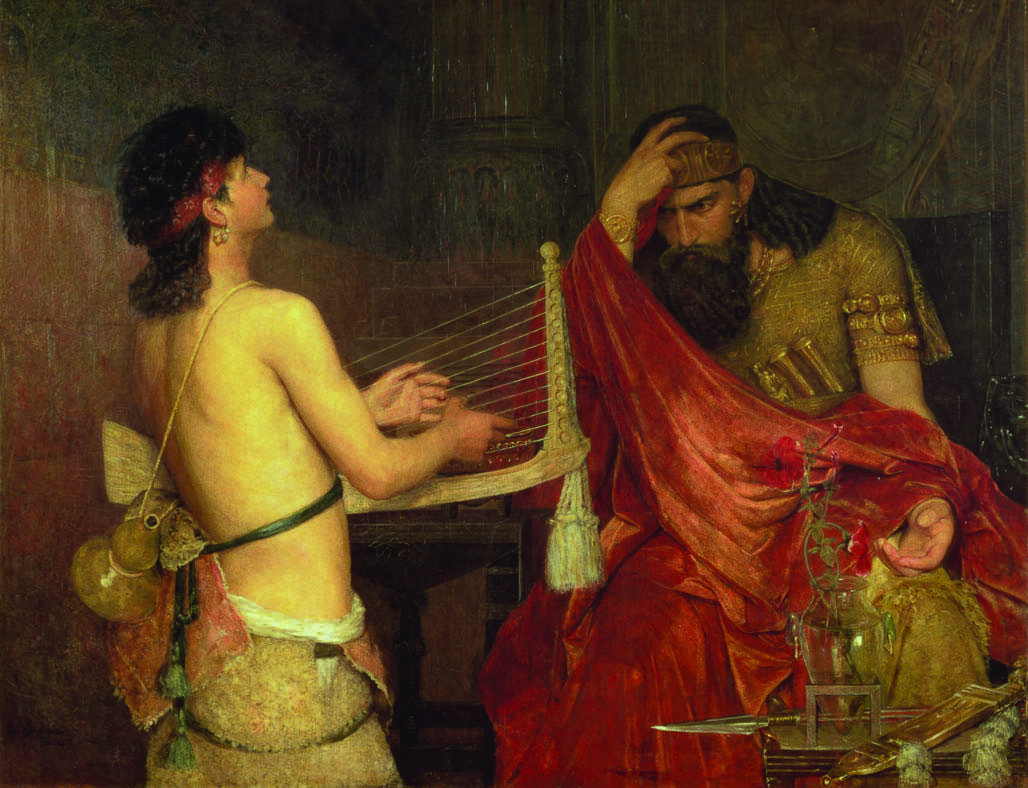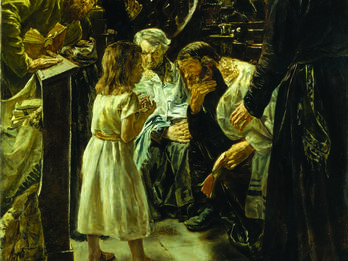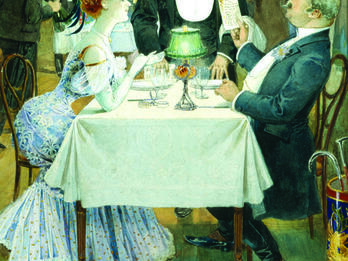David and Saul
Ernst Josephson
1878
Image

Engage with this Source
Creator Bio
Ernst Josephson
1851–1906
Born in Stockholm to a family that had immigrated from Prussia in the late eighteenth century, Ernst Josephson settled in Paris in 1879. In his early paintings, he primarily focused on historical and biblical subjects inspired by the Old Masters. In the 1880s, influenced by Gustave Courbet and Édouard Manet, his style became more realist and impressionist. Josephson became a leader of the Opponents, a Paris-based group of modernist Swedish artists who rebelled against the artistic conservatism of their native land. While suffering from mental illness during the last two decades of his life, Josephson was extremely productive in an innovative expressionist mode.
You may also like

Jews Praying in the Synagogue on Yom Kippur
The women’s prayer section depicted in this painting gives a rare glimpse into the ways that women have asserted their agency and voices even in gender-segregated spaces.

Christ Preaching at Capernaum
Maurycy Gottlieb saw his art as essential to his universalist vision, namely, as a way to improve Polish-Jewish relations. As he said, “I am a Jew and a Pole and, God willing, I want to serve both.”…

The Twelve-Year-Old Jesus in the Temple with the Scholars
When Max Liebermann first exhibited this painting, it caused not only a sensation but a scandal. Some critics objected to a Jew daring to depict Jesus, and they were offended by Liebermann’s realistic…

Return of the Prodigal Son
The Christian parable of the prodigal son, from Luke 15:11–12, was a favorite subject of artists from the seventeenth through the nineteenth century. A son squanders his inheritance and is reduced to…

The Avenue de l’Opéra, Sunlight, Winter Morning
In late 1897, Camille Pissarro, the noted impressionist artist, known for his many landscapes and cityscapes, came to Paris and rented a room in the Hôtel du Louvre, which gave him a good view of the…

At the Restaurant
Though Benjamin-Eugène Fichel is better known for his historical paintings set in the eighteenth century, in this painting he documents modernity itself. Here a wealthy couple orders a meal in a…

